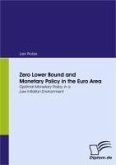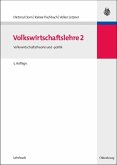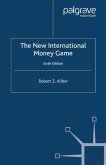Inhaltsangabe:Abstract: The case of Japan showed that the zero bound is a problem for the conduct of monetary policy that even nowadays has to be considered. For several years Japan experienced deflation and a short rate very close to zero leaving monetary policy almost helpless to boost economic activity. The same fears came up in America and Europe as economic performance deteriorated and nominal interest rates were lowered rapidly to stimulate the economy. However, lowering the interest rate to stimulate the economy is only possible when interest rates are above zero. In this paper it shall be explored how optimal monetary policy is conducted with the constraint that interest rates cannot fall below zero and how large the risk to hit the bound is in the euro area. The first part is done in a New Keynesian model with sticky prices but flexible wages the second in an estimated model of the euro area. The outline of the paper is as follows. In the next chapter an overview of the work on the zero bound and monetary policy is presented. Thereafter the New Keynesian model as it was presented by Eggertson and Woodford will be used to determine optimal policy. It will be shown that quantitative easing, as it was done by the Bank of Japan, is not an appropriate tool in the model surrounding to escape a deflation spiral and what should be done instead. It will be shown that credible commitment is able to overcome most of the distortions induced by the zero bound. The central bank should commit itself to a target for the price level instead of a target for the rate of inflation. The optimal solution involves credible commitment to cause subsequent inflation when deflation vanishes. This management of expectation will help to escape a deflation spiral faster and causes lower welfare losses. After treating the phenomenon in a model surrounding it shall be explored what the chances are to slide into that vicious circle if monetary policy follows a Taylor rule and how likely the zero bound is under different wage contracting specifications. This will be done in a small estimated euro area economy model. It shall also be considered how the announcement of a positive inflation target well above zero may help to avoid the zero bound. This was done by the European Central Bank that changed its target from an inflation rate between zero and two to a rate below, but close to, two percent. Finally the results will be discussed focussing on the assumptions [...]
Dieser Download kann aus rechtlichen Gründen nur mit Rechnungsadresse in A, B, BG, CY, CZ, D, DK, EW, E, FIN, F, GR, HR, H, IRL, I, LT, L, LR, M, NL, PL, P, R, S, SLO, SK ausgeliefert werden.









